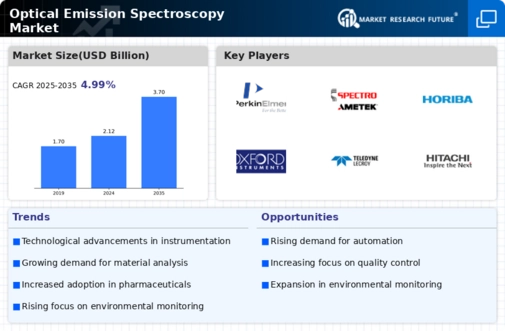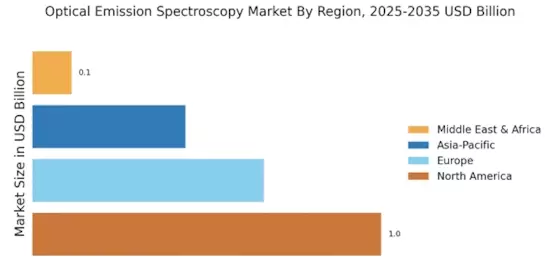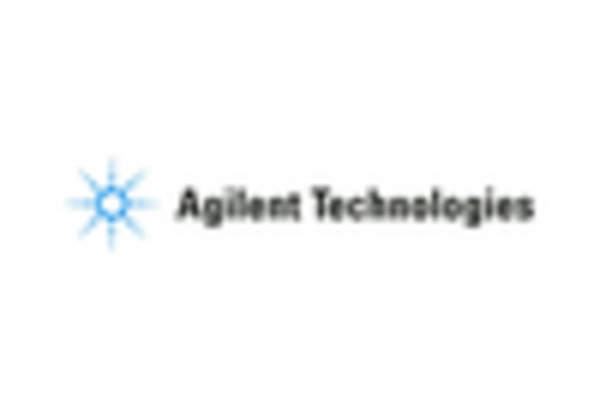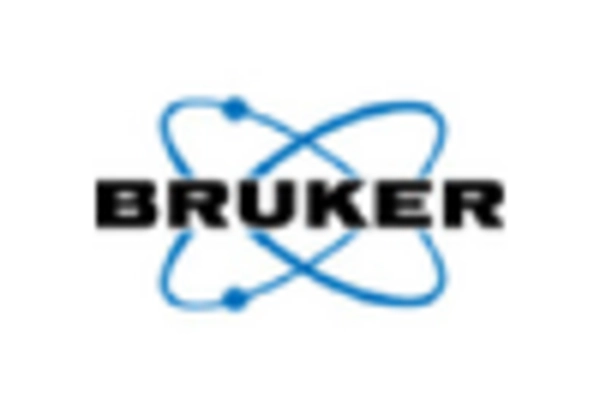Growing Environmental Regulations
The Optical Emission Spectroscopy Market is also influenced by the tightening of environmental regulations across various sectors. Governments and regulatory bodies are imposing stricter guidelines on emissions and waste management, necessitating accurate monitoring of material compositions. Optical emission spectroscopy serves as a vital tool for compliance, enabling industries to analyze pollutants and hazardous materials effectively. This regulatory pressure is likely to drive demand for advanced spectroscopic techniques, as companies seek to avoid penalties and enhance their sustainability practices. The market is expected to see a notable increase in adoption rates, particularly in industries such as waste management and environmental consulting.
Increased Demand for Quality Control
Quality control remains a pivotal driver in the Optical Emission Spectroscopy Market, particularly in manufacturing and production sectors. The need for precise material composition analysis is paramount, as it directly impacts product quality and compliance with industry standards. Industries such as aerospace, automotive, and pharmaceuticals are increasingly utilizing optical emission spectroscopy to ensure that materials meet stringent specifications. This heightened focus on quality assurance is expected to propel the market, with estimates suggesting a market value exceeding USD 1 billion by 2026. The ability to provide real-time analysis and immediate feedback further solidifies the role of optical emission spectroscopy in maintaining high-quality production processes.
Rising Applications in Research and Development
Research and development activities are expanding the horizons of the Optical Emission Spectroscopy Market. Academic institutions and research organizations are increasingly employing optical emission spectroscopy for material characterization and analysis in various scientific fields. The versatility of this technique allows for its application in metallurgy, nanotechnology, and even biochemistry. As research initiatives grow, the demand for sophisticated analytical tools is expected to rise correspondingly. This trend is likely to contribute to a robust market growth trajectory, with estimates suggesting that R&D applications could account for a significant portion of the market share by 2027.
Integration of Automation in Analytical Processes
The integration of automation within the Optical Emission Spectroscopy Market is transforming traditional analytical workflows. Automated systems enhance throughput and reduce human error, making them particularly appealing in high-volume production environments. The trend towards automation is evident in the increasing adoption of robotic sample handling and automated calibration processes. This shift not only improves efficiency but also allows for more consistent and reproducible results. As industries strive for operational excellence, the market for automated optical emission spectrometers is anticipated to expand significantly, with projections indicating a potential increase in market share by 20% over the next few years.
Technological Advancements in Optical Emission Spectroscopy
The Optical Emission Spectroscopy Market is experiencing a surge in technological advancements that enhance analytical capabilities. Innovations such as improved detector sensitivity and faster data acquisition methods are driving the adoption of these systems across various sectors. For instance, the integration of artificial intelligence and machine learning algorithms into optical emission spectrometers is streamlining data analysis, thereby increasing efficiency. Furthermore, advancements in miniaturization are making these devices more accessible for field applications. As a result, the market is projected to grow at a compound annual growth rate of approximately 6.5% over the next five years, reflecting the increasing reliance on sophisticated analytical techniques in industries such as metallurgy and environmental monitoring.

















Leave a Comment